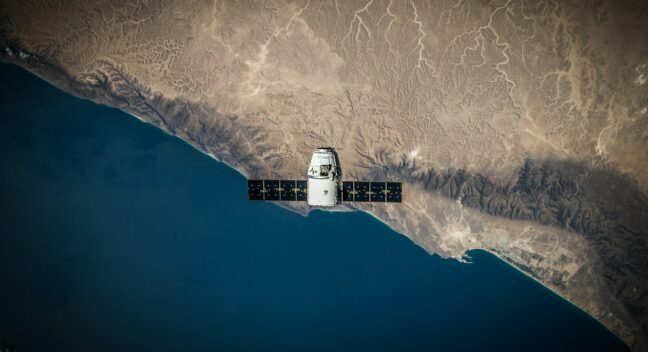Modelling, monitoring and forecasting systems


DESCRIPTION
Coping with climate variability and change requires availability of timely and reliable climate information, as well as up-to-date information on the occurrence and severity of extreme events, possible impacts and their duration. Systematic monitoring, remote sensing, modelling and their integration with GIS systems are considered as options to strengthen adaptation planning and implementation. In this regard, the increasing development of more powerful and operative decision-support systems, also based on visualisation tools, can improve the transfer of actionable scientific knowledge on climate change to decision-making and implementation.
The World Meteorological Organization (WMO) acknowledges that in many parts of the world forecasting remains the only effective measure which can be realistically implemented to protect life and property in the face of extreme meteorological events. Climate services have a special role towards adaptation. They combine the collection of climate data about past, present and future, with the development of products that help improve the understanding of climate impacts on natural and human systems, and the use of these data and products for decision making. Reliable climate information and associated services have already demonstrated their role in climate-sensitive sectors, such as agriculture, health, disaster risk reduction, energy and water supply (Global framework for Climate Services).
The Copernicus Climate Change Service (C3S) supports society by providing authoritative information about the past, present and future climate in Europe, supporting adaptation and mitigation policies of the EU. C3S is implemented by the European Centre for Medium-Range Weather Forecasts on behalf of the EU and provides an important resource to the Global Framework for Climate Services (GFCS).
In this regard, the H2020 Clara project is working on the development of new and enhancement of the existing, innovative climate services, building upon the newly developed C3S near-term forecasts, aimed at a more efficient management of natural resources and improved resilience to climate change. The climate services developed within this project include the horizontal service (DATACLIME) providing easy access to climate data and customisation of climate analysis, and several sectoral climate services with local applications, including those developed and tested in certain areas of the Emilia Romagna region, Italy. Examples of sectoral climate services include:
- FLOODMAGE for disaster risk reduction due to floods originating from coastal storm surge, heavy rainfall and river outflow with a demo for the coastal town of Rimini;
- IRRICLIME a climate smart irrigation tool, able to spatially and temporally predict core water budget variables for the agriculture system of Castiglione water district in Emilia Romagna,
- AQCLI, providing an assessment of how climate change will affect air quality, especially in the area around the city of Bologna, Italy.
For the Adriatic-Ionian region, the I-STORMS project, supported by the Interreg ADRION programme, has delivered the Web Integrated System (IWS). This is a shared and interoperable system to allow a better exchange of information among partners and stakeholders in the Adriatic-Ionian area on sea storms and their effects on coastal areas. The I-STORMS Web System is a combination of a common data system for sharing ocean measurements and forecasts, a multi-model forecasting system, a geoportal and interactive geo-visualization tools to make results available to the public.
COSTS AND BENEFITS
Significant direct benefits typically derive from the combination of monitoring, modelling and forecasting systems with climate services and early warning systems. Historical climate trends including extreme weather events, projections of climate change and its impacts, and analysis of risks and sector vulnerability to climate change facilitate evidence-based adaptation and decision making on the long term. Benefits are especially associated with the implementation of these actions in several climate sensitive sectors, such as agriculture (e.g. to optimise irrigation in water shortage periods), health (e.g. to support heat wave warning system and the implementation of heat action plans) and disaster risk reduction (in particular for flood and drought management).
According to the WMO report on the State of Climate Services for the agriculture sector, climate information and the associated services have demonstrably led to improved agricultural and food security outcomes and benefits for stakeholders in the sector. The report estimates that investments in climate services overall have a cost-benefit ratio of 1 to 10 and that the benefits of investing systematically in strengthening the operational global regional-national hydrometeorological system needed for climate services outweigh the costs by about 80 to 1. Climate services with proven benefits for adaptation are recommended to be scaled up and supported by adequate financing. To do this, a systematic monitoring and evaluation of socio-economic benefits associated to these services is needed.
Benefits of monitoring, modelling and forecasting systems depend on the intrinsic characteristics (accuracy, time and spatial resolution, time needed for running models), but also on the decision-making process (access to climate information, attitude to understand risks) and on the governance system (programmes and policies).
IMPLEMENTATION TIME AND LIFETIME
Implementation time depends on the specific objective and characteristics of the modelling, monitoring and forecasting systems. Maintenance and improvement of these systems is a continuous process that is needed to reduce uncertainty and provide reliable information tailored to each specific sector, spatial scale and objective. The lifetime depends on the financing available for the maintenance and updating of these systems. Availability of skilled experts is also a prerequisite to run and progressively improve modelling, monitoring and forecasting systems.
SOURCE FOR MORE DETALIED INFORMATION
World Meteorological Organization
Global framework for Climate Services
World Meteorological Organization, (2019). 2019 State of Climate Services. Agriculture and food security.
